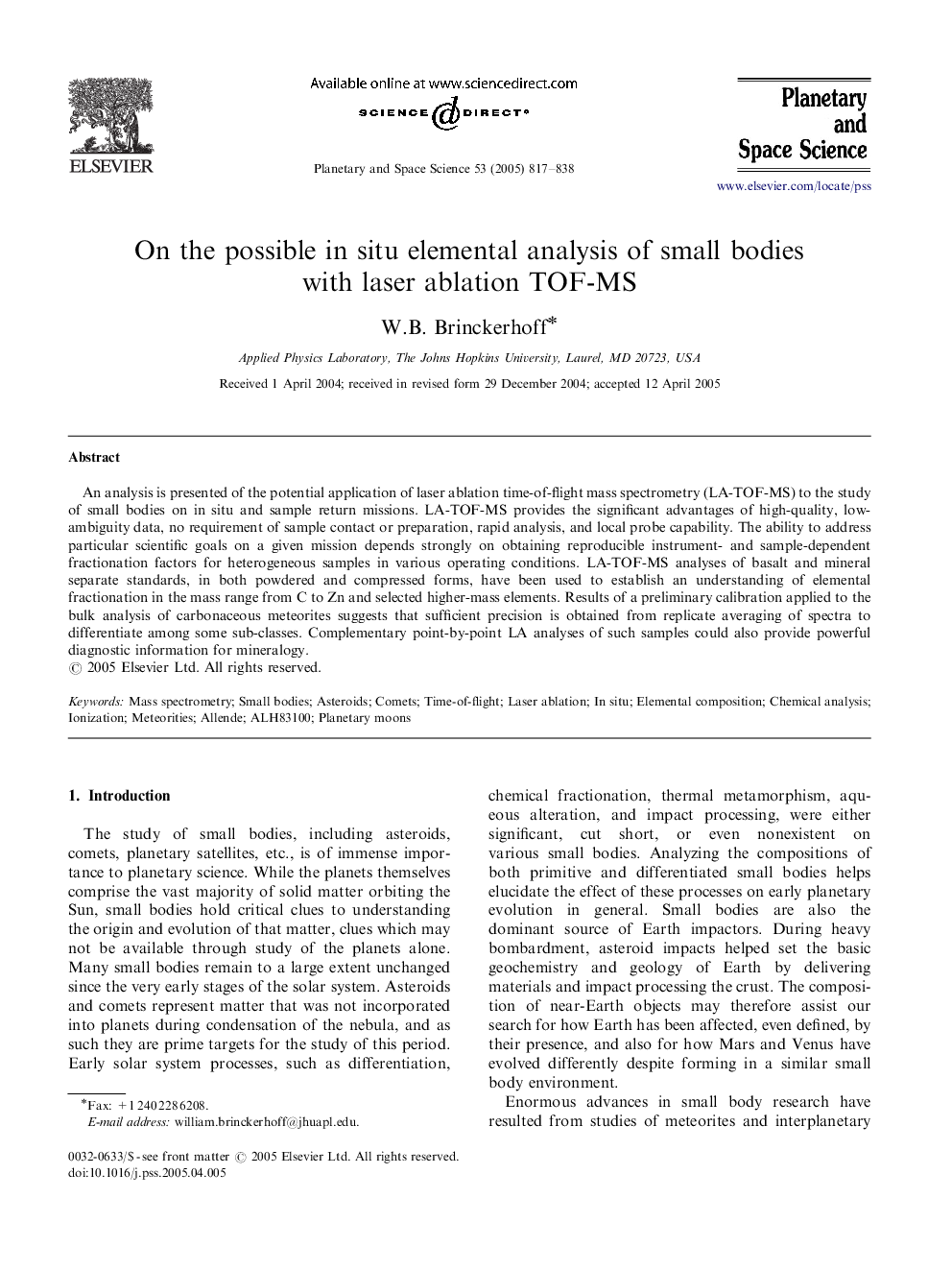| Article ID | Journal | Published Year | Pages | File Type |
|---|---|---|---|---|
| 10705583 | Planetary and Space Science | 2005 | 22 Pages |
Abstract
An analysis is presented of the potential application of laser ablation time-of-flight mass spectrometry (LA-TOF-MS) to the study of small bodies on in situ and sample return missions. LA-TOF-MS provides the significant advantages of high-quality, low-ambiguity data, no requirement of sample contact or preparation, rapid analysis, and local probe capability. The ability to address particular scientific goals on a given mission depends strongly on obtaining reproducible instrument- and sample-dependent fractionation factors for heterogeneous samples in various operating conditions. LA-TOF-MS analyses of basalt and mineral separate standards, in both powdered and compressed forms, have been used to establish an understanding of elemental fractionation in the mass range from C to Zn and selected higher-mass elements. Results of a preliminary calibration applied to the bulk analysis of carbonaceous meteorites suggests that sufficient precision is obtained from replicate averaging of spectra to differentiate among some sub-classes. Complementary point-by-point LA analyses of such samples could also provide powerful diagnostic information for mineralogy.
Keywords
Related Topics
Physical Sciences and Engineering
Earth and Planetary Sciences
Geophysics
Authors
W.B. Brinckerhoff,
